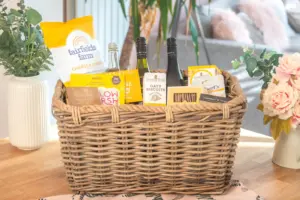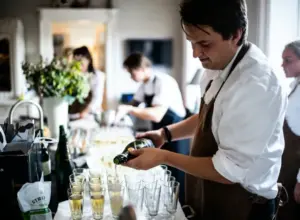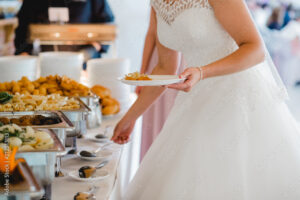When you’re throwing a party, you want your guests to enjoy hot, delicious food throughout the event. But how do you keep food warm for a party? It’s not as difficult as you might think. With a few tips and tricks, you can ensure your food stays at the perfect temperature.
Whether it’s a casual get-together or a formal dinner, maintaining the right warmth for your food can make a big difference.
It’s all about planning ahead and using the right equipment. From slow cookers to chafing dishes, there are numerous options available to keep your food warm and tasty.
So, don’t let cold food put a damper on your party. Let’s explore how you can keep your food warm and your guests happy. You’ll be the host with the most in no time.
Preparing for the Party
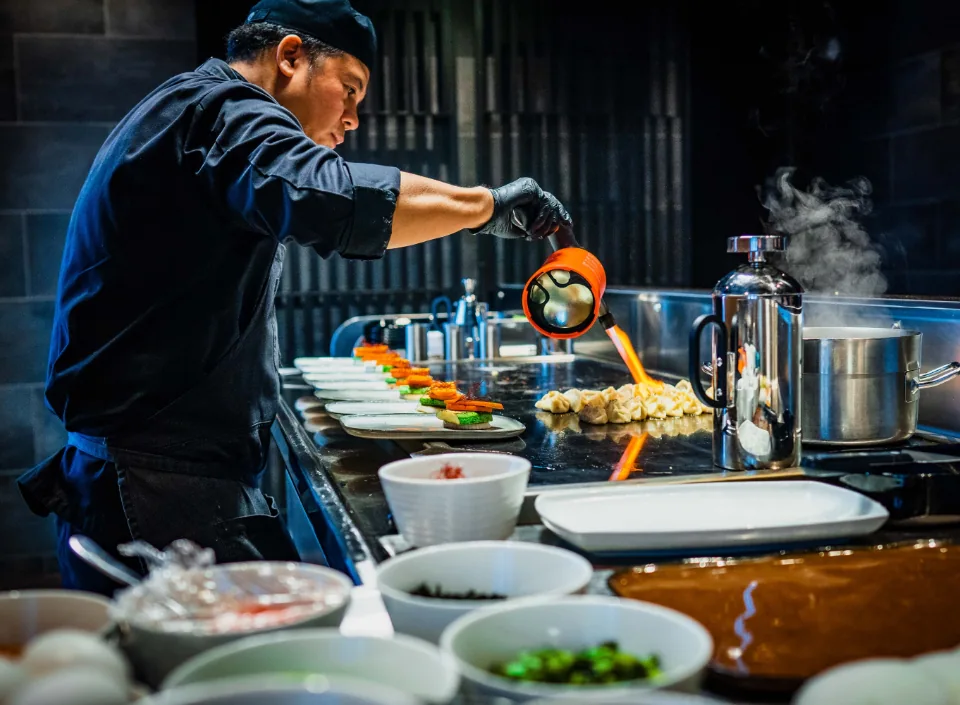
Cold food at parties? That’s a thing of the past! Head into your event with the right game plan and equipment. Planning is pivotal. In fact, the secret to keeping food warm throughout your event lies in your planning phase.
Start by deciding which dishes you will serve. Dishes that are easy to keep warm should be your top picks.
Think along the lines of casseroles, baked pasta, slow-cooked meats, and soups. These dishes can hold heat well and are easy to serve.
You’ll want to steer clear of foods that can turn soggy or lose their texture when kept warm for extended periods.
The next vital thing to note is the portion size. If your event is a large gathering, consider breaking meals up into smaller serving dishes rather than one large dish.
This way, you can keep the bulk of your food warm while only a small portion is served at a time.
You will want to have particular equipment. Slow cookers and chafing dishes, these shine at parties! Slow cookers keep your food at a consistent temperature, ensuring they remain perfectly warm.
Chafing dishes, on the other hand, use a heat source underneath to maintain food temperature and prevent it from going cold. They’re our favorite to have on hand when catering buffets!
What about using an oven? Well, surprisingly, an oven can multi-task beyond baking those delicious pastries.
You can use an oven to your advantage and use the oven’s residual heat. Once you finish cooking, turn the oven off.
You can then use this retained heat to keep food warm. Just pop the dishes in and voila – no cold food, only delicious warm food at your party!
Choosing the Right Equipment
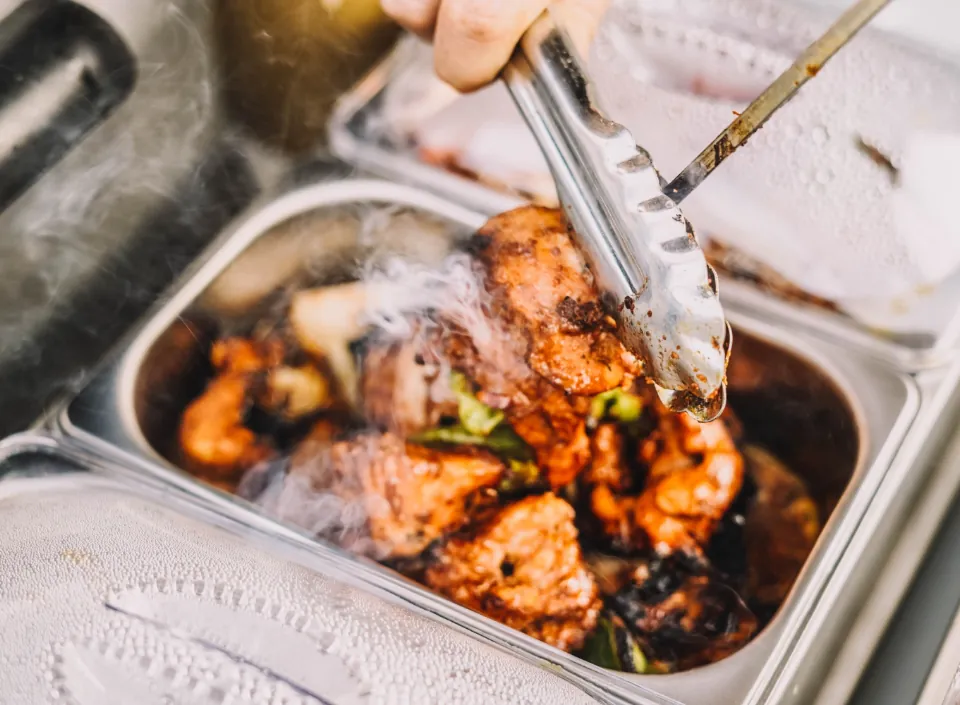
Choosing the right equipment is a crucial step in planning your party menu. Whether you’re serving hot hors d’oeuvres or a full dinner, it’s essential to have the appropriate appliances not only to prepare your dishes but also to keep them warm and delightful.
Slow cookers are a favorite tool for many hosts, and for a good reason. These devices keep food at a steady, low temperature for hours on end, letting you set and forget your dishes until it’s time to serve them. They’re perfect for stews, meatballs, or any dish that enhances in flavor over time.
Another essential tool you will want to have on hand is the chafing dish. These dishes are a must at any buffet, helping maintain a constant temperature for food.
They’re perfect for lasagna, pasta dishes, and casseroles that you wouldn’t usually prepare in a slow cooker. On the other hand, you might overlook your oven as a piece of equipment for keeping food warm, but it’s more useful than you might think.
The residual heat in the oven after cooking can assist in maintaining dishes like bread warm, which otherwise could become stale and hard if left out for too long.
Warming trays and hot plates are also handy to keep food warm and ready to serve. They are especially beneficial for foods like pizza, fries, and other finger foods that can lose their appeal if they cool down.
Remember, the tools you choose can make a massive difference to the taste and temperature of your food. Taking the time to select the right equipment will ensure your dishes remain hot, appetizing, and just as you planned.
The right tools in your kitchen can seal the deal and make your party a resounding success.
Just make sure you test all equipment before the party to guarantee it’s working as it should – nobody wants a party ruined by malfunctions, especially if you are organising catering for a hen party!
Here is a quick rundown in a simple markdown table:
| Type of tool | Best for |
|---|---|
| Slow cookers | stews, meatballs |
| Chafing dishes | lasagna, pasta dishes, casseroles |
| Oven | bread |
| Warming trays and hot plates | pizza, fries, finger foods |
Using Insulated Containers
Following slow cookers, chafing dishes, ovens, and warming trays/hot plates, let’s shift focus to another practical solution: insulated containers.
Renowned for their reliability, insulated containers offer an efficient method of keeping food warm for long periods.
From stylish thermal carafes to robust catering-grade containers, these tools can be invaluable when planning your party menu.
They’re portable, versatile, and the perfect safeguard against rapidly plunging food temperatures.
Specifically designed to retain heat, insulated containers work on a simple principle: they slow down heat loss by resisting thermal exchange.
That is, they curtail the movement of heat from a warmer area (your food) to a cooler one (the external environment).
Choosing the right option for your needs depends on various factors, primarily the type of food you’re serving, such as:
- Solid foods: Thermal casserole carriers or insulated serving dishes are your best bet. Look for models with double-wall insulation and a secure lid.
- Liquid foods: For soups or beverages, turn to thermal carafes or insulated soup containers. These options usually come equipped with vacuum insulation to provide superior heat retention.
- Individually portioned items: Think insulated lunch boxes or food jars. They’re great for maintaining the temperature of individual servings, making portions easy to distribute and handle during your gathering.
Ensure to preheat your insulated container before use to achieve the best result.
This critical step gives you extra mileage by increasing the warmth retention capacity, so your food stays piping hot for the guests.
All it takes is filling the container with boiling water, allowing it to rest for a few minutes, emptying it, and then replacing it with your piping hot food.
Remember, insulated containers are not meant to cook food; they are merely designed to keep it warm.
Therefore, hot foods should be fully cooked and heated to the desired serving temperature before placing them in the container.
Don’t forget to test the equipment prior to the party to ensure it’s working as expected and to eliminate awkward surprises during the festivities.
So, as you see, incorporating these tools into your plan might be just the trick you need to maintain that delicious warmth in your carefully prepared dishes.
Doesn’t your party deserve the warm touch that only insulated containers can provide?
Utilizing Slow Cookers
Enter here the slow cooker, a multipurpose tool that’s not just for preparing meals but also for keeping food warm for extended periods. They’re convenient, efficient, and an excellent addition to any party planner’s toolkit.
You’re familiar with a slow cooker’s primary function: cooking meals slowly over several hours. But did you know they’re also great for maintaining food temperature?
Set your slow cooker on its warm or low setting, and voila, you’ve got the perfect tool to keep your food warm without overheating or drying out.
What types of food work well in a slow cooker? It’s a versatile tool, so a variety of options are open to you:
- Soups
- Chilis
- Meatballs
- Dips
- Casseroles
Remember, just like with insulated containers, preheating your slow cooker is key. Plug it in about 15-20 minutes before you plan to use it.
This way, you’re not introducing hot food into a cold environment, which would expedite the cooling process.
What’s more, slow cookers come with their lids, making it easy to cover your food and maintain its temperature.
Keep the lid on as much as possible to retain warmth. Every time it’s removed, precious heat escapes.
Lastly, it’s important to remember this isn’t a one-size-fits-all solution. For example, while your beef stew might stay delicious and piping hot, your crispy French fries would likely become soggy and unappetizing.
Always consider the type of food you’re dealing with when deciding on the best method to keep it warm.
Experimentation and practice will help you maximize the use of a slow cooker in your party planning. Future parties will only benefit from your experiments now, so don’t hesitate to try different foods and setups.
As always, ensuring your guests enjoy the food at its optimal temperature is well worth the effort.
Setting Up a Buffet-style Spread
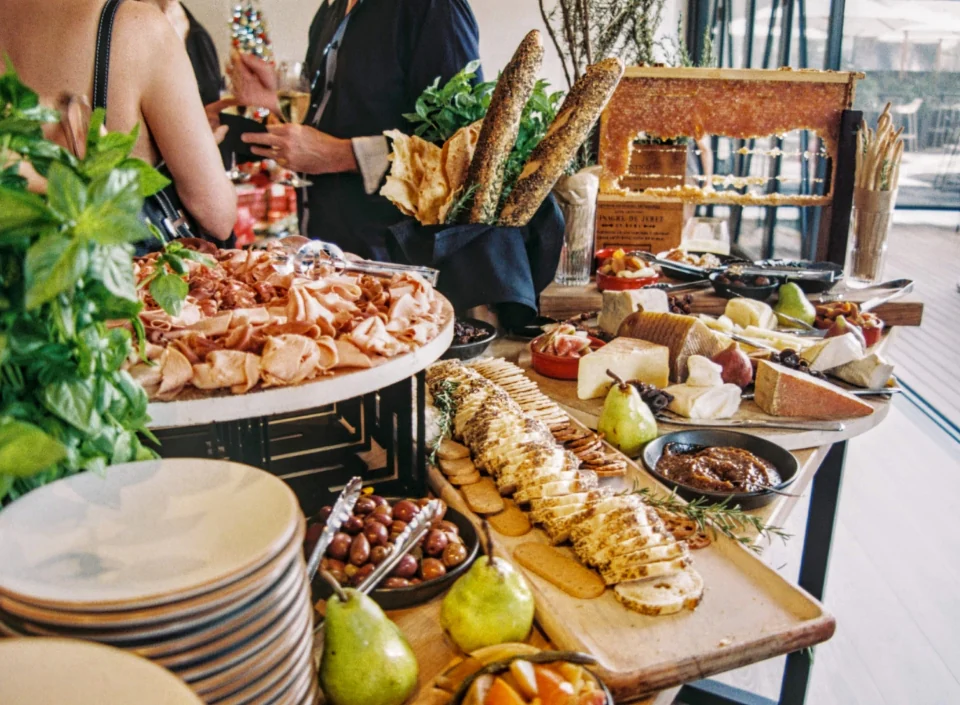
As you transition from discussing insulated containers and slow cookers, it’s critical to take the next step in your party planning: setting up a buffet-style spread.
This way, everyone can help themselves, adding a relaxed feel to your event and keeping food warm and enjoyable throughout.
Start by arranging your dishes logically. Hot mains and sides typically come first, followed by room-temperature salads or dishes, then bread, and finally condiments.
This structure helps streamline the flow of guests, preventing bottlenecks and helping keep the main dishes warm.
Placement of warm dishes is also essential. You want to ensure hot dishes are placed on warming trays or heating pads to maintain their temperature. An adjustable heated serving tray is a solid investment for frequent entertainers.
These nifty tools provide consistent, adjustable heat—perfect for keeping dishes warm on a buffet.
Don’t ignore the look of your buffet spread, though. It should be as appealing to the eye as it is to the stomach. Create visual interest by using different heights of serving dishes, or place dishes on top of inverted bowls or decorative boxes on your buffet table.
As you plan your spread, you also need to remember food safety considerations.
The “danger zone” for bacterial growth is between 40°F and 140°F, so keep hot foods above 140°F and cold foods below 40°F.
Here’s a handy table of dangerous and safe food temperatures:
| Food Temperature | Safety Guidelines |
|---|---|
| Below 40°F | Safe for cold foods |
| 40°F – 140°F | Danger zone |
| Above 140°F | Safe for hot foods |
With these tips, you’ll ace the setup of your buffet-style party, ensuring you keep your fabulous food warm for everyone to enjoy at their leisure.
Frequently Asked Questions
What is the next step in party planning?
The next step in party planning involves setting up a successful buffet-style spread.
How should you Arrange buffet dishes?
You should try arranging the dishes logically and maintaining the temperature of warm dishes using warming trays or heating pads.
How important is visual appeal in a buffet spread?
Creating a visually appealing buffet spread is highly important. It enhances the dining experience and makes the food more appetizing.
What food safety guidelines are recommended for a buffet spread?
You should be following food safety measures as it is crucial while setting up a buffet spread.
How can thermal food carriers be used for a party?
Thermal food carriers as a tool for maintaining the warmth of food when catering to a large crowd.
Summary of How to Keep Food Warm for a Party
You now know the importance of how to keep your party food warm and a well-planned buffet spread, the use of warming trays, and heating pads.
You’ve also understood the significance of a visually appealing set-up that’s not just about aesthetics but also about maintaining food safety.
Remember, thermal food carriers are your best friend when it comes to keeping food warm for a crowd.
You’re all set to host a party where the food stays warm, delicious, and safe. So go ahead, plan that party and let your warm, tasty dishes steal the show.
